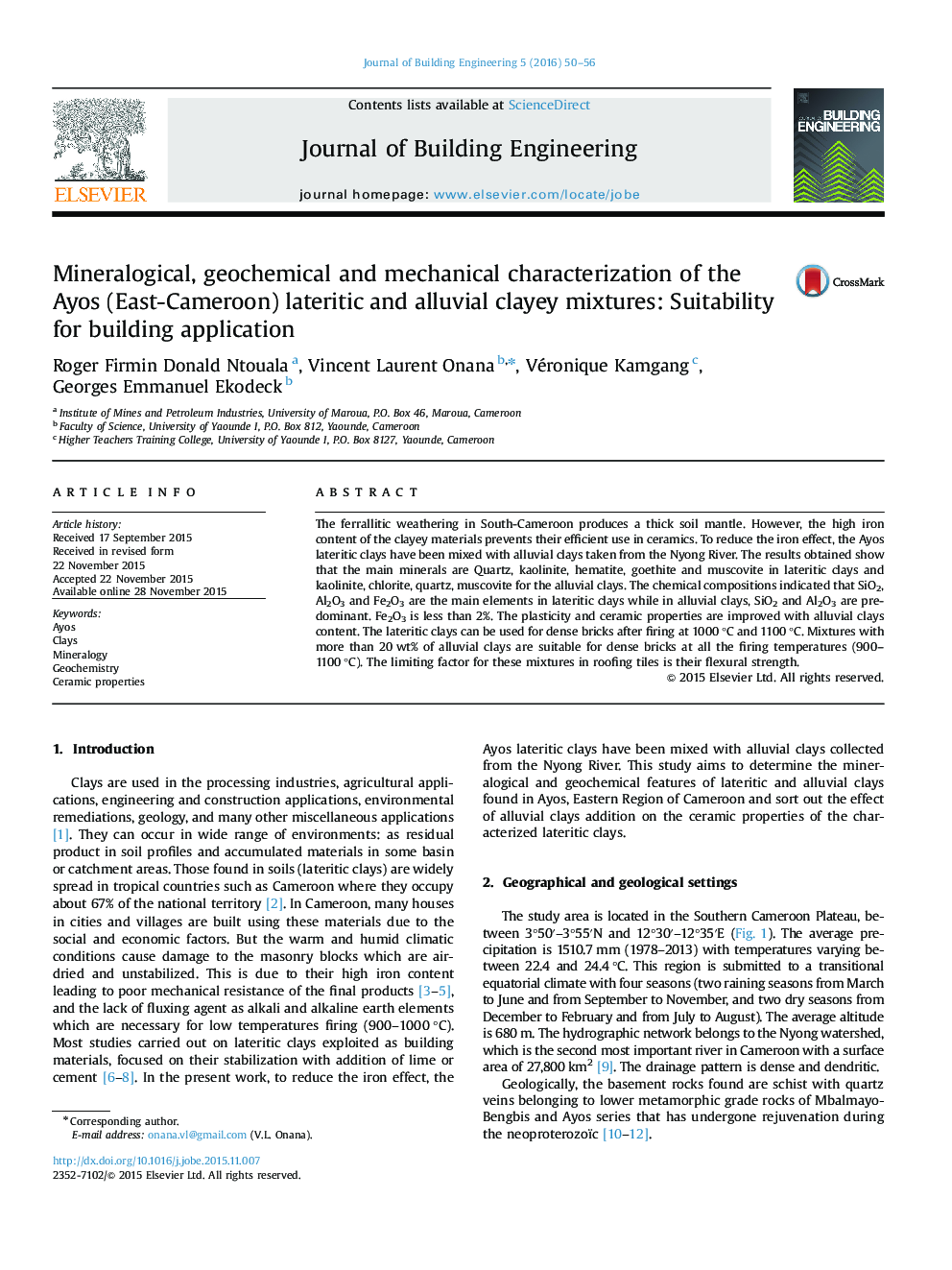| Article ID | Journal | Published Year | Pages | File Type |
|---|---|---|---|---|
| 283834 | Journal of Building Engineering | 2016 | 7 Pages |
•High iron content in lateritic clays limits their use in ceramic.•Ayos lateritic clays have been mixed with alluvial clays from the Nyong River.•Physical and mechanical characteristics increases with the alluvial clay content.•Mixtures with 20 wt% of alluvial clay can be used for dense bricks at T>900 °C.
The ferrallitic weathering in South-Cameroon produces a thick soil mantle. However, the high iron content of the clayey materials prevents their efficient use in ceramics. To reduce the iron effect, the Ayos lateritic clays have been mixed with alluvial clays taken from the Nyong River. The results obtained show that the main minerals are Quartz, kaolinite, hematite, goethite and muscovite in lateritic clays and kaolinite, chlorite, quartz, muscovite for the alluvial clays. The chemical compositions indicated that SiO2, Al2O3 and Fe2O3 are the main elements in lateritic clays while in alluvial clays, SiO2 and Al2O3 are predominant. Fe2O3 is less than 2%. The plasticity and ceramic properties are improved with alluvial clays content. The lateritic clays can be used for dense bricks after firing at 1000 °C and 1100 °C. Mixtures with more than 20 wt% of alluvial clays are suitable for dense bricks at all the firing temperatures (900–1100 °C). The limiting factor for these mixtures in roofing tiles is their flexural strength.
